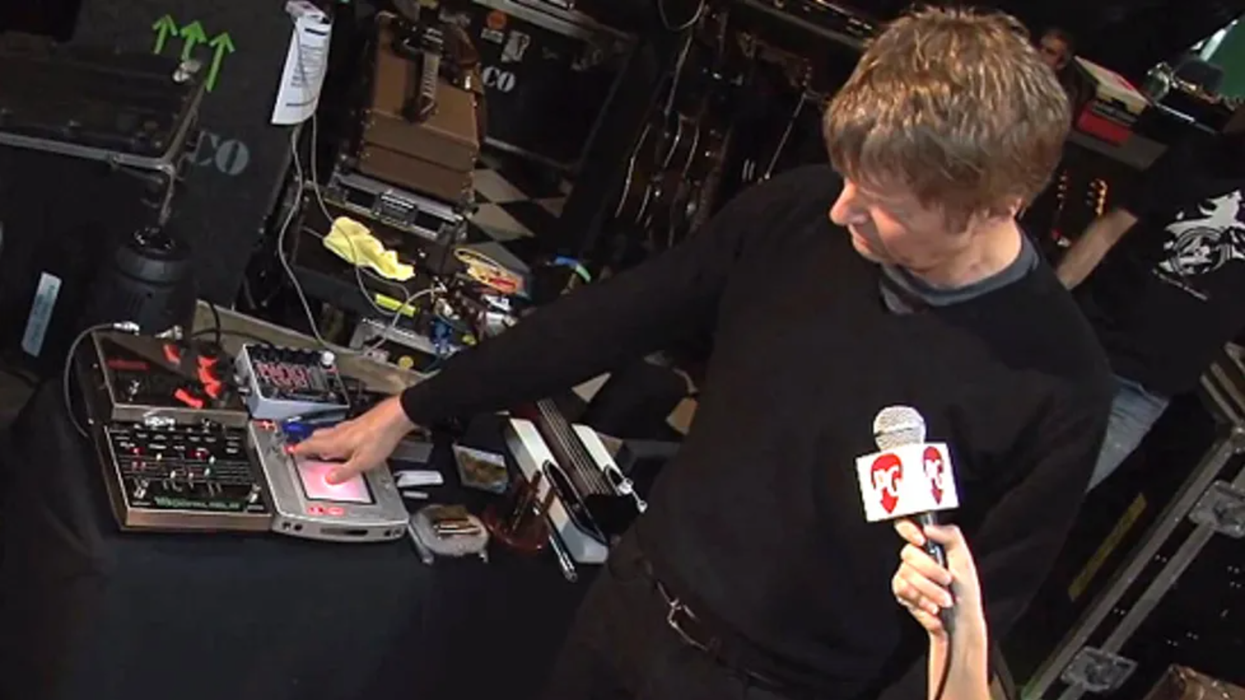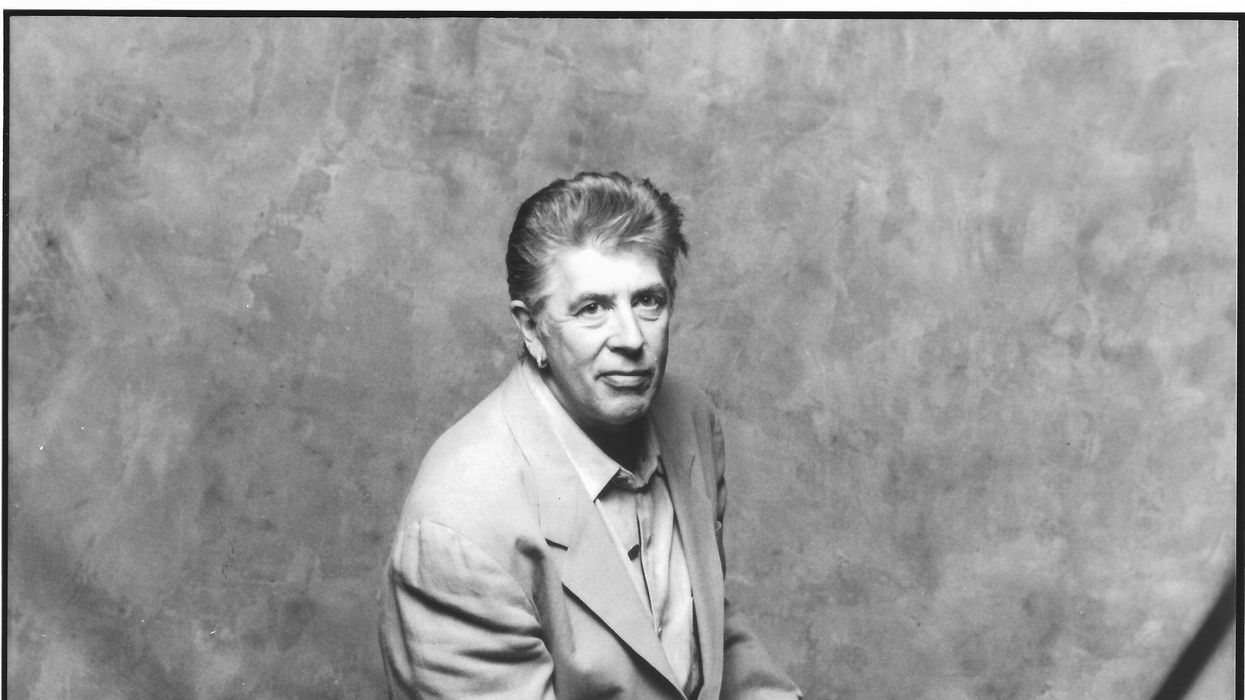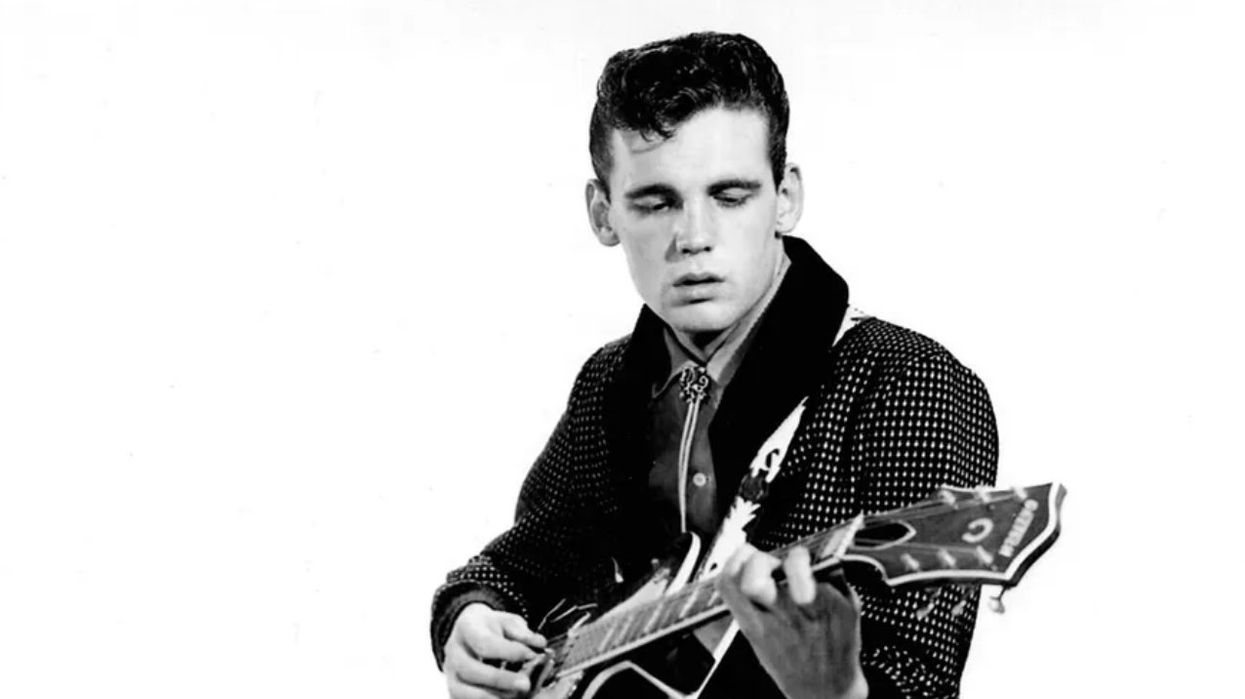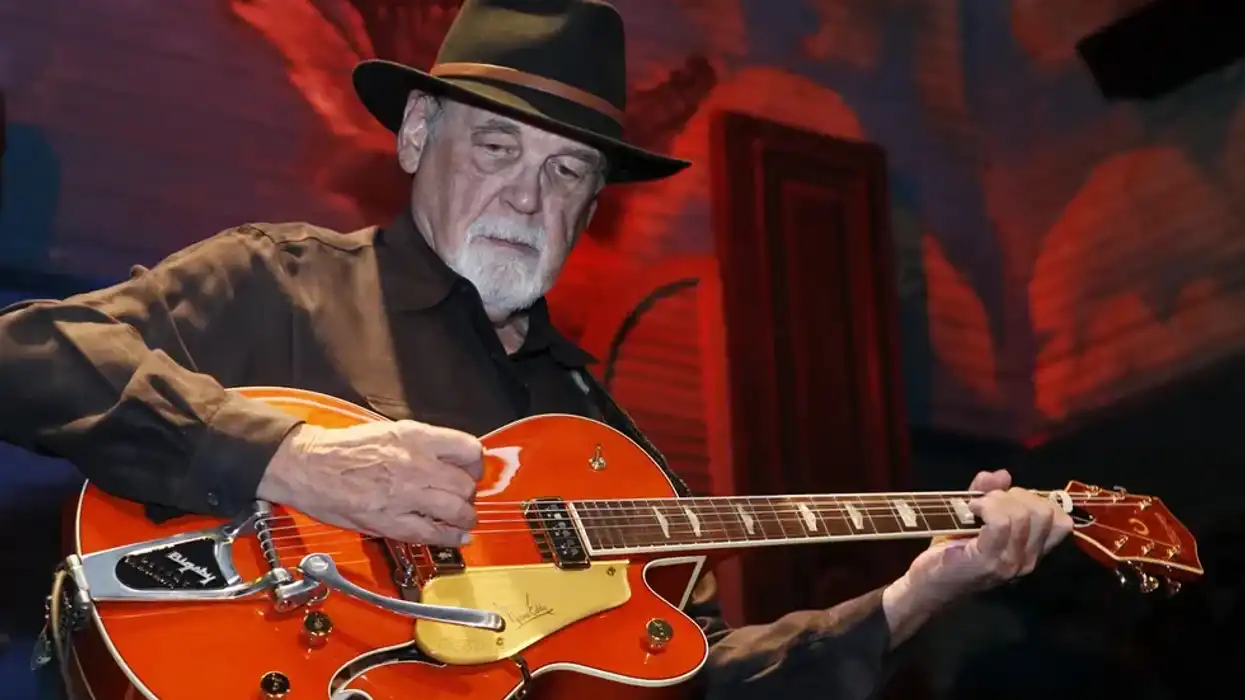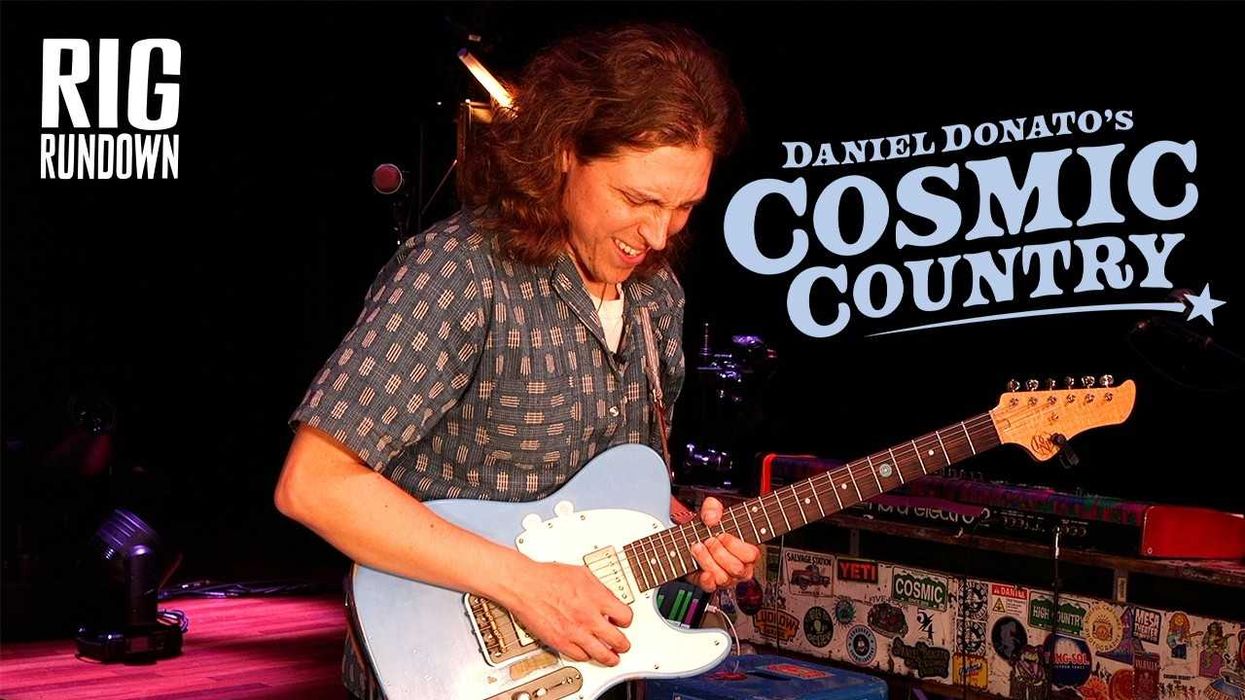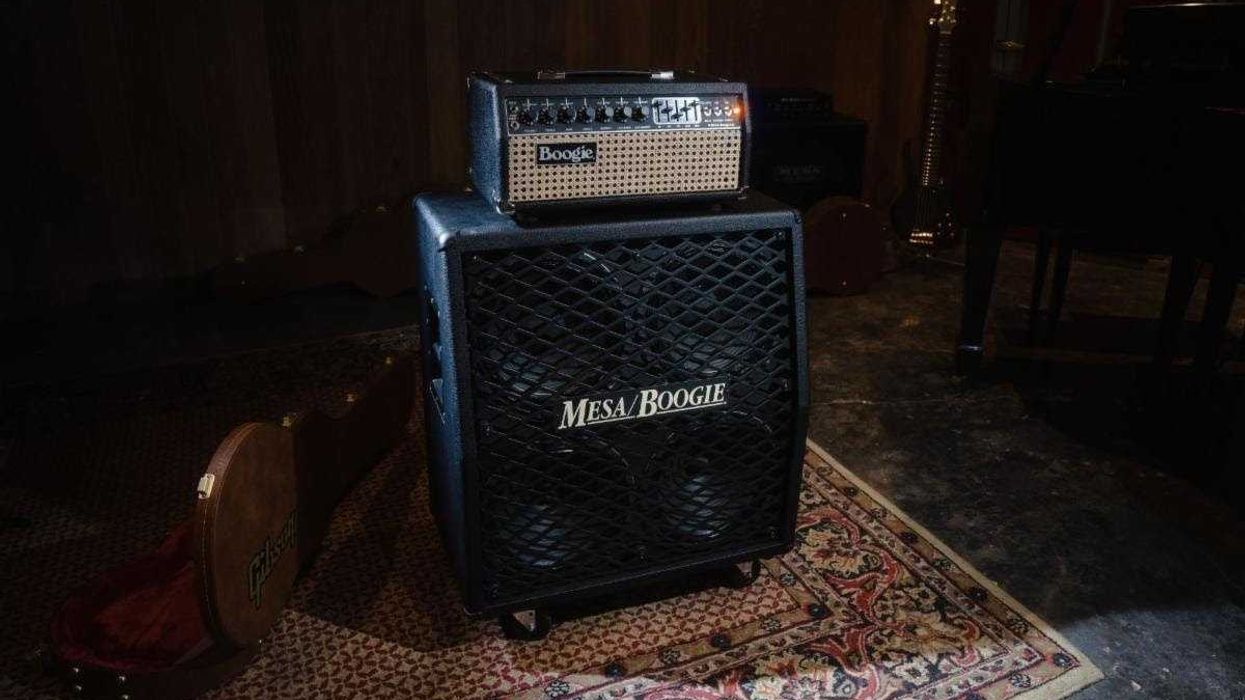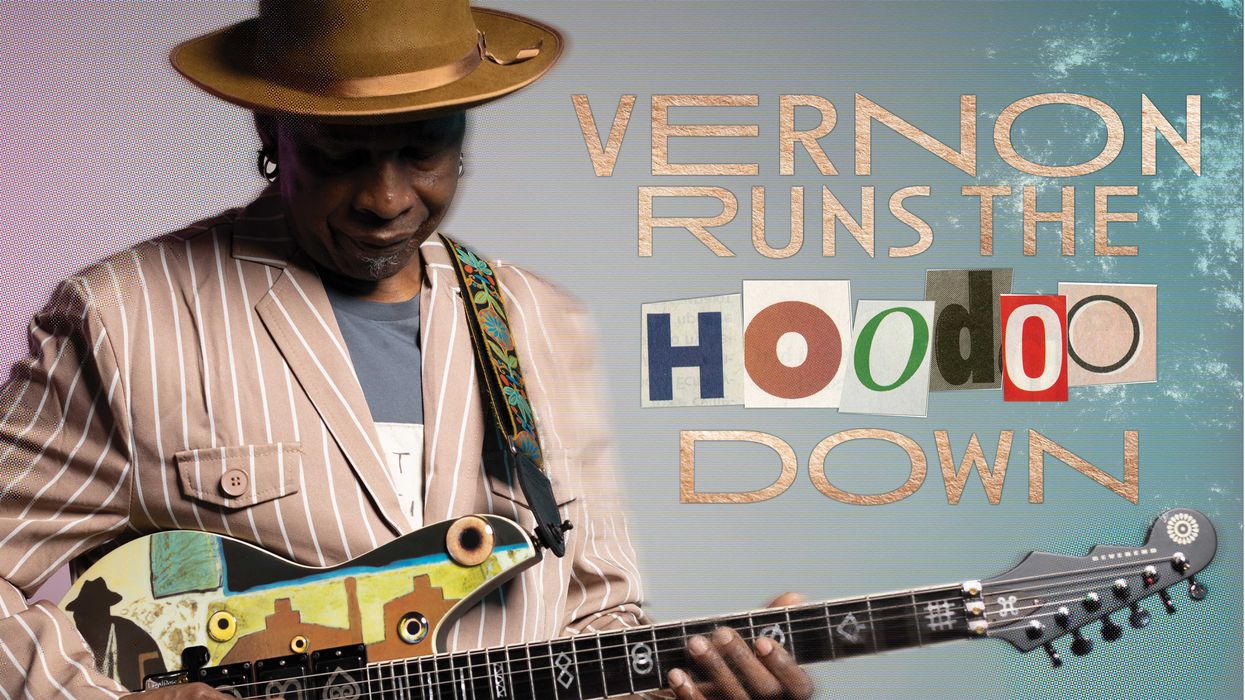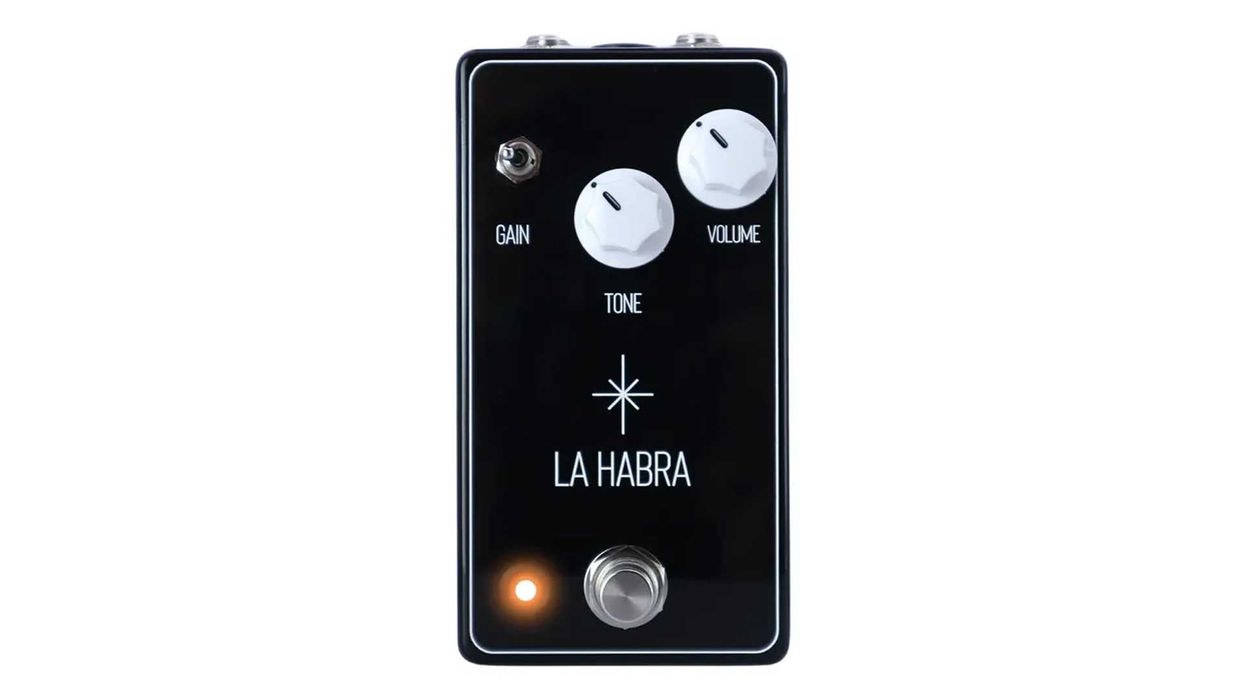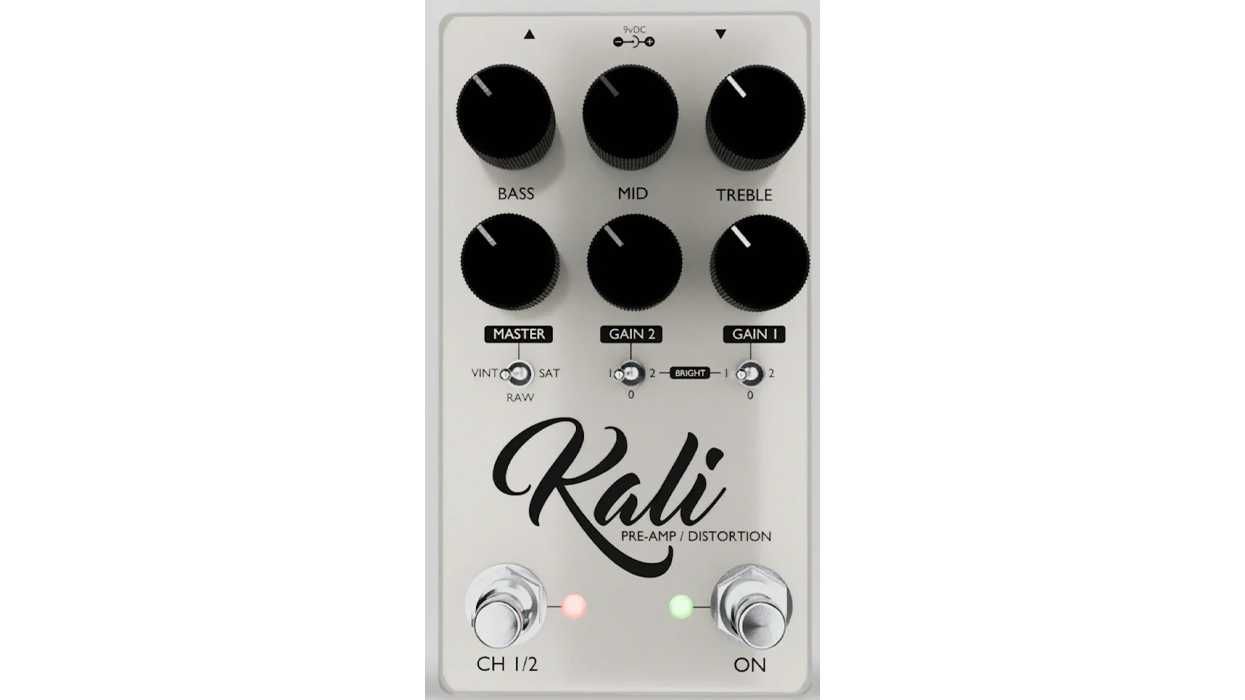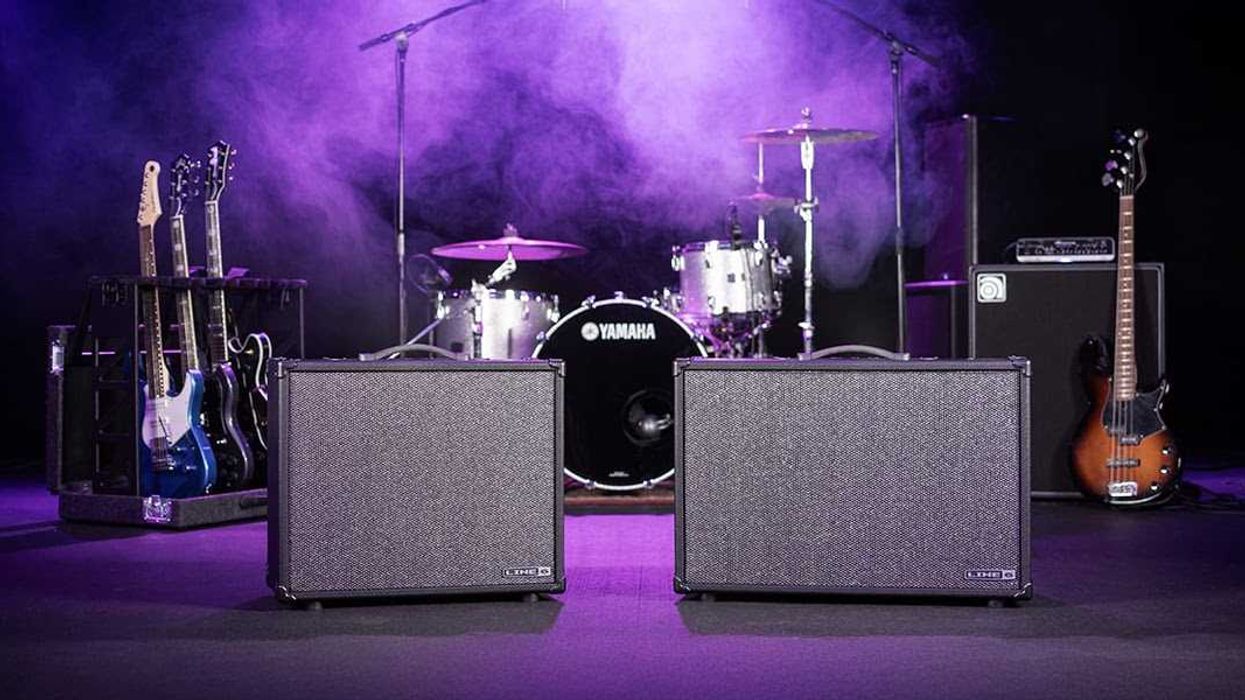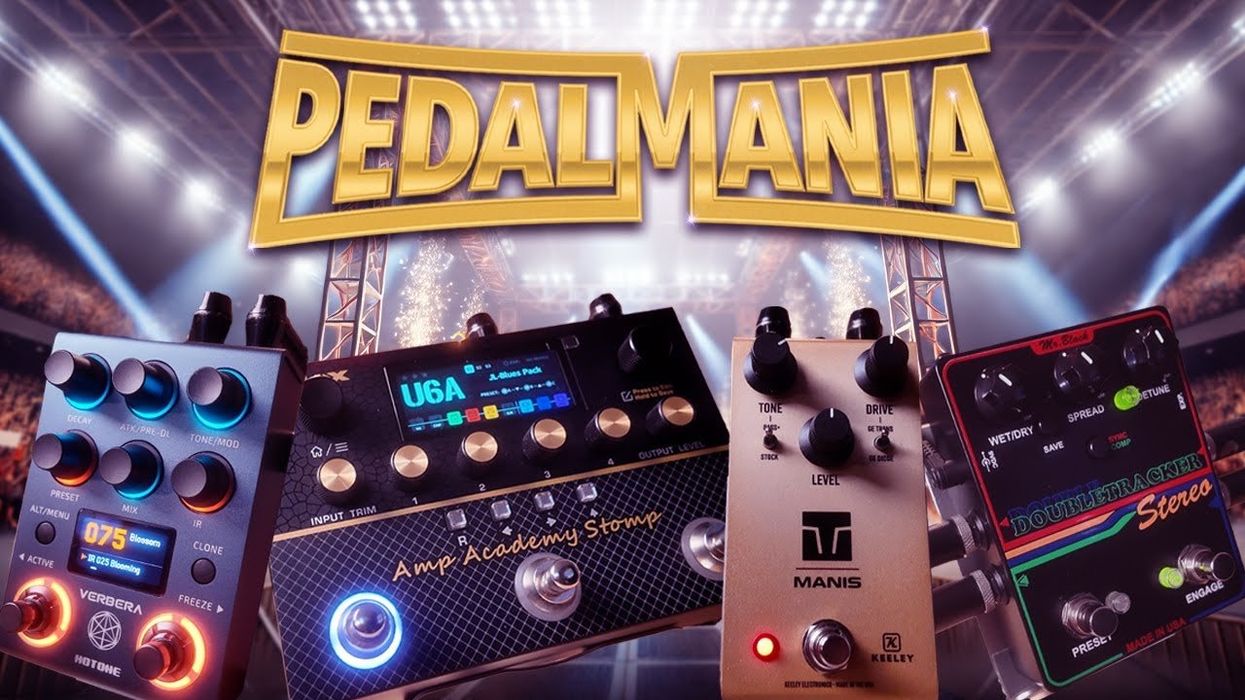I am writing this column for two reasons: One, I was asked to and I thought "why not?" and two, I am a pedal geek. But I am serious about pointing out that, with all the chatter and obsessiveness surrounding equipment generally, and effects pedals specifically, all that matters is what you like.
That could just as well be an amplified wire hooked to a eucalyptus tree going into an old radio or some fabulous overpriced vintage guitar combined with a boutique amp and 23 Illuminati-approved effects pedals. Freedom of expression is what I am about, and gear is innocent fun! But please, let me invoke the brilliant Neil Young lyric that opens "Hippie Dream" before I undertake my arduously-considered mini-list of "essential" effects pedals" (I wish the number had been 10, and I already cheated and combined distortion, fuzz, and overdrive as one!): "Take my advice: don't listen to me"....
1. Volume
I have owned several volume pedals since the '70s. My first was a Morley with the photo-sensor system, and though cumbersome as hell and AC-powered, it was great. After compromising over the years with ones that are lighter and rather structurally unsound, I have ended up with the Boss FV-500. It looks like something on Buck Rogers' spaceship, and I have only broken two of them—which, for me, feels like victory. I use the volume pedal constantly and have ever since I got wind of Steve Howe and Robert Fripp in the early '70s. Constantly shaping/changing volume while keeping the same tone, the "violin effect" (swelling up just after picking), and keeping any single coil-derived 60-cycle hum at bay are just a few reasons why I rely on this item so heavily. That said, holding one foot on the volume pedal while keeping my weight on my other foot has taken a bit of a toll on my aging skeleton, though I am able to use either foot.
2. Distortion/Fuzz/Overdrive
This could quickly become overly complicated ... but I like distortion, and nowadays we delineate between "fuzz," "overdrive," and "distortion," so I will cave and do it as well.
Fuzz: I own a zillion fuzzboxes. I don't often acquire them as part of a search for "classic" fuzz sounds, however. This is a beautiful time for boutique effects pedals, and there are so many great ones out there, and I love them: the Fulltone '69 (classic), Uglyface (ultra-wild), Creepy Fingers MkI (classic), Catalinbread Octapussy (classic), Mid-Fi Electronics Random Number Generator (super sick), and the Devi Ever Soda-Meiser and/or White Spider (classic and sick) are just a few favorites. But the one I always bring along is the Z.Vex Fuzz Factory. Henry Kaiser turned me onto this thing ages ago, and I use it both in its wild, aleatoric mode and in a narrowed, "castrated" mode (after other pedals, which tames it) with equal effectiveness and joy. With Wilco, I use it in "tamed" mode for near-infinite controlled feedback and serious grunge. The pedals themselves are now rather legendary for their fabulous look—I treasure my custom-painted little Z.Vex boxes. I also use the Fuzz Factory on many an improvised music gig for all kinds of sonic mayhem—from sublime to vile. I rely on it!
Overdrive: I am one of those Klon Centaur cultists. This is another box that Henry Kaiser turned me on to years ago—when one could actually buy one! Back then (late '90s), it was the most expensive pedal I'd ever bought at more than $300, but now ... forget it! The thing is so great sounding, versatile, has plenty of gain, cleans up nicely, yet can drive hard. But what to do if you can't spend $650+ on the rare one you might see on eBay? Simple: get a Sarno Music Solutions Earth Drive. I have never seen one in a store, and I am not sure that Brad Sarno and his lovely wife are ready for an onslaught of orders (should I be sorry?), but the thing is inexpensive and almost as fabulous as a Centaur. It's much smaller, so it's what I bring on trips with my own band/improvisers (I must travel with lots of little pedals wrapped in socks in a little Pelican case when not with mighty Wilco).
I admit to not understanding the Tube Screamer thing—that mushy, underpowered green box. Sorry! So take this (and everything I write here) with several grains of salt. I've also enjoyed overdrive items by Crazy Tube Circuits, Fairfield Circuits, JAM Pedals, Catalinbread, and Walrus Audio. Henry K. even showed me the delights of the Tech 21 Randy Bachman pedal! But again, just use what works for you.
Distortion: I ended up loving the '70s-era Marshall Guv'nor distortion after many Pro Co Rat years. But the input/output jacks disintegrate and nothing fits into those big holes left after that plastic decays. The Z.Vex Box Of Metal almost stole my heart with its super-shaping tone knobs and cool gate option (it is good). Then I discovered the Crazy Tube Circuits Starlight, which is just as rich and creamy as a Rat or Guv'nor but has even more oomph—more presence (whatever that means). Made in Greece and marketed by Tone Concepts in Toronto, it's a killer. I am still a bit baffled as to why there are so few "distortion" options as opposed to "fuzz" and "overdrive," but as a previously-admitted Howe and Fripp guy, sometimes I want loud, creamy-with-definition, sustaining distortion for soaring, non-screeching melodic wailing. Between my old Guv'nors and the Starlight, I can get it.
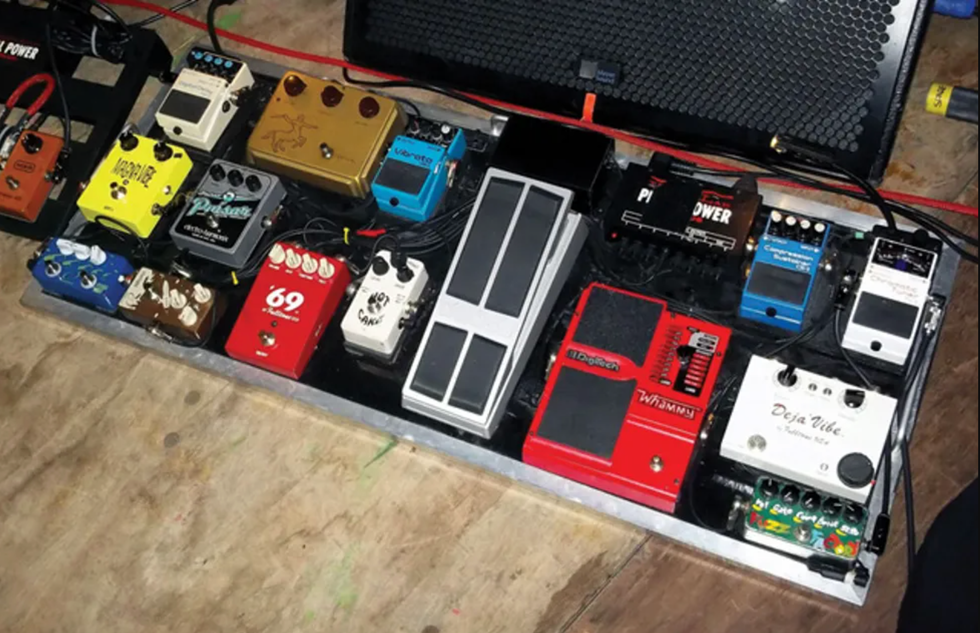
Cline's late 2011 Wilco pedalboard is home to some of his favorite overdrive, distortion, and fuzz pedals: the Klon Centaur, Z.Vex Fuzz Factory, and Crazy Tube Circuits Starlight, among other tone toys.
3. Compression
I use the humble and sometimes maligned Boss CS-3 compressor pedal and have for ages. I played with two guitarists in the '80s who turned me on to the advantages of the compressor pedal: Nick Kirgo (in a band I was in called BLOC) and Bill Frisell (when we played together with Julius Hemphill). I usually use the compressor as a clean boost plus sustainer. It brings idiomatic sounds out of my guitar such as harmonics and string sounds behind the bridge and above the nut. It enables me to play a clean sound over any looping (my old looper requires a constant balancing act between the loop and the playing levels). And sometimes the compressed tone is just damn pleasing. I like the latch on/off on Boss pedals a lot—especially on the compressor when one can kick it in midstream and it just squishes on rather than pops on. I also really dig the Pigtronix Philosopher's Tone, which Jimmy Vivino turned me on to. I think it sounds better than the CS-3. but I'm an old dog.
4. Delay/Echo
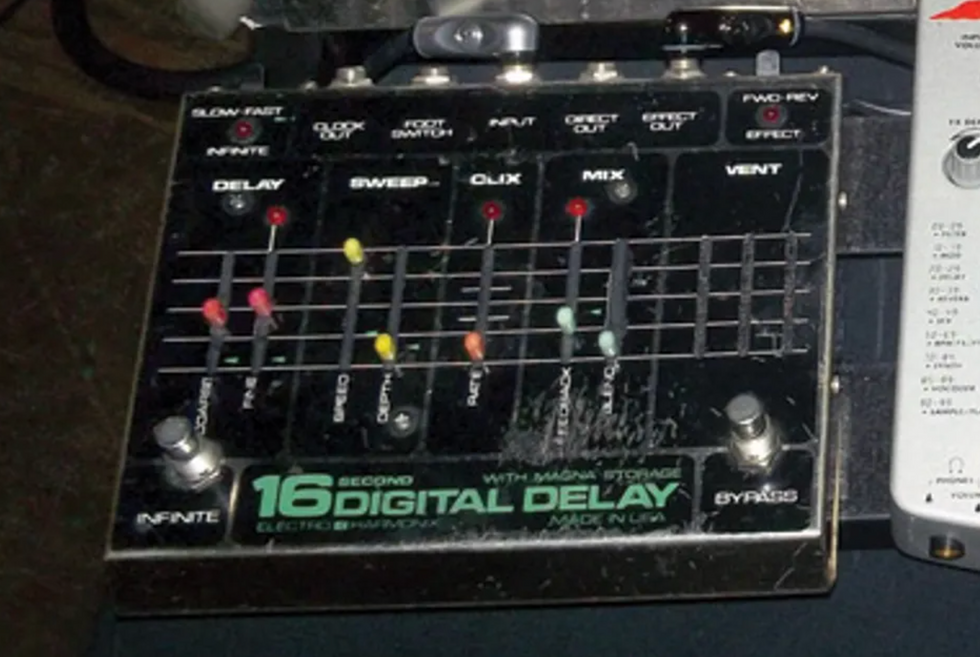
The inimitable Electro-Harmonix 16 Second Digital Delay on Cline's board.
I used to always use an Echoplex for delay until it became too unwieldy—and back in the late '80s people actually ridiculed me for using it along with "stompboxes" instead of rack units and MIDI controllers. I sigh sadly as I ponder how many of those alleged "essentials" are rusting in landfills as I write this. Anyway, I now prefer a Keeley-modded Boss DD-3 pedal. The Keeley modifications provide some "warmer" delay effects choices while I am still able to get my old DD-3 weirdness happening (as in, really fast, heavy repeat-laden, digital-sounding, electro spazz-outs that I can cut on and off with no trail off). And, of course, I can get simple, tasteful bounce. I can get by with a plain old DD-3, too, but the Keeley one is just a bit better. I am not married to delay and reverb the way many guitarists seem to be, but I do want it when I want it. I also adore the Electro-Harmonix Deluxe Memory Man, Fulltone Tube Tape Echo, and the like, but try carrying all that stuff around in an under-50-pound suitcase! Runner up in the "Super Cool" and "Original Delay Dept.": the new Catalinbread Echorec, which has wild multi-delays and warble modeled on the classic Binson Echorec—beautiful. And it's small!
5. Looper
This last pick was almost a tie between the DigiTech Whammy Pedal and the mention of my antiquated and super-scarce Electro-Harmonix 16 Second Digital Delay (which would have been even more cheating on my part). I use them both all the time. I much prefer the original Whammy (the smaller red one) and have had some really aggravating experiences with the newer, "reissue" (the big red one that's not really a reissue at all—it's just red). But I am so lost without my old EH 16 Second. I have used it since Bill Frisell showed me his (he is the master) back in 1985. It's always recording, one can drop sounds into the loop non-destructively, do reverse (everything does reverse these days, but alas), it's small, It's magic. It's also rare as hens' teeth, and after writing this column it may be even more difficult to get! Too bad. To me, it's one of the coolest things ever, and I rarely leave home without it. I have tried other things; the nice folks at Electro-Harmonix even gave me a wonderful 2880 to mollify me since their "reissue" also wasn't a reissue and didn't do what the old one did at all, and I'd whined loudly and irritatingly about it. I think it was the first gratis piece of gear I ever got, and it came with a sweet note from Mike Matthews and everything—amazing! But sadly for me, the EHX 16 Second DD is all I like (try to find one and then try to afford one—my first one I got used for $225). It's become a part of my playing and my sound, especially in my own music (The Nels Cline Singers, et al), and with improvisers.
Well, that's it. Take from it what you will. I am just ... me. I hook up all my stuff and think to myself every time: "I have so much fun wherever I go!" Enjoying, making, manipulating, surrendering to the world of sound. You can do it with almost anything—clap your hands together, or hum, or whatever it is you do ... just enjoy.
[Updated 11/8/21]
